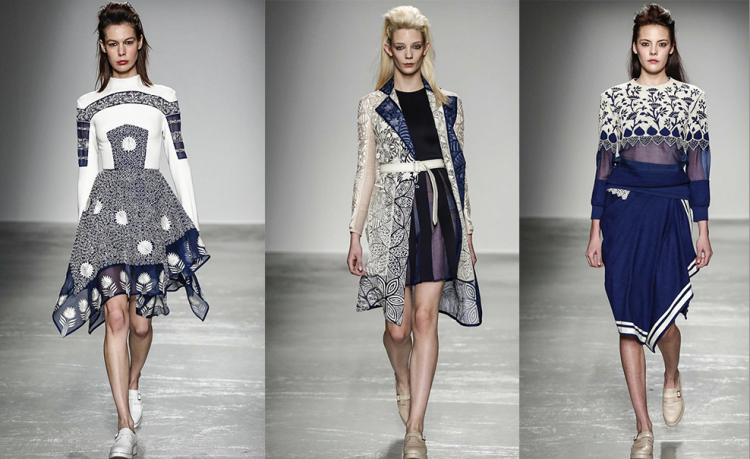From India to Paris, With Love: Rahul Mishra AW16

“Add a rose to everything you create.” Or was it everything you create should be like adding a small rose?
Rahul Mishra, a fashion designer focused on championing sustainability and traditional Indian craftsmanship, was in the process of explaining to me his belief that fashion, as well as other endeavors, should create happiness for all those involved. I was somewhere between star struck and mentally scrambling.
Minutes earlier I had been sitting in the lobby of the Palais de Tokyo contemplating what it would have been like to interview Mishra. I was also beating myself up because I should have been on my way home to write about Mishra’s AW 2016 show and not going for Korean food.
Then he walked by.
Before I could think, I was being introduced and heard my friend tell him, "Gina has a few questions."
I thanked him for doing what he does and then asked about his degree in engineering. He didn't outright correct me, but seamlessly pointed out that he believed his degree in physics helps him to be an even better designer. Mishra was the first Indian designer to win the International Woolmark Prize — former winners were Karl Lagerfeld and Yves Saint Laurent — as well as the first non-European to receive a full scholarship to the Instituto Marangoni. So when he says physics makes him a better designer, it’s believable.
Rahul Mishra. Image Credit: Merino.com.
Rahul Mishra exudes a sort of peace that makes you fully understand how guru followings are formed. Even though his show had ended over an hour ago — which is then usually followed by a barrage of interviews — he was fully attentive, even to the graduate student straightening out her facts. His smile seemed genuine and although calm, you heard the enthusiasm and conviction in his voice as he explained we’re all poets and creators. So when he looked me in the eyes said, “A poet can not create under stress. We must create out of love,” I was reminded of why fashion is art and that I should definitely meditate more.
His AW16 collection wasn’t about sex appeal that comes from the dark red satins and heavy furs often found in fall collections. It was about the weightlessness of silk organza, the bold heroics of blue, and the complexity of hand embroidered materials. Heavy fabrics were balanced out with lighter colors. Dark fabrics were lit by brightly and/or camel colored details. Unfortunately, I was not able to truly appreciate the collection until viewing it online; there I was able to savor the intricacies and colors.
Rahul Mishra AW16. Image Credit: Nowfashion.com.
The allusion to the urbanity of India and Paris is seen in the diagonal zippers on the biker jackets and models with side braids. The traditions of India were apparent in the incorporation of sheer materials, often sheerer midriffs, and subtle sari-like draping. Then there were the details that evoked the look of the Parisian woman who knows exactly how to translate sophistication and power with a scarf thrown over one shoulder. And of course, there was blue. The sort of blue that becomes pronounced while living in the 7th arrondissement.
Rahul Mishra AW16. Image Credit: Nowfashion.com.
Like many of us, Mishra has a special place in his heart for Paris. Although focusing on heritage, he usually trades the familiar Indian color palette of jewel tones for the Parisian pastels. This collection was no different. As it turns out, it was an ode to the resiliency of the Parisians after the November attacks. He admires how the weight of the darkness of the tragedy did not stop the French, Parisians in particular, from being true to themselves and living out their culture.
I was beginning to understand what he meant by, “complexity and simplicity are intertwined.” This was not simply a collection marrying the complexities of tradition with contemporary, or Indian-ness and Parisian aesthetic, or even spring in the midst of winter.
This was a letter of acknowledgment, accompanied by a rose; from India to Paris, with love.










